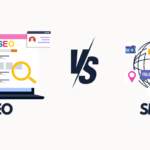Introduction: The Robots Meta Tag Unveiled
If you’ve ever dabbled in the world of SEO, you’ve probably encountered the enigmatic world of meta tags. These little snippets of code wield the power to guide search engine crawlers, directing them on how to treat your website’s content. One particular meta tag, the Robots Meta Element, has been a hot topic, especially after Google’s John Mueller dropped some unexpected insights on Reddit.
Decoding the Robots Meta Tag
Before we dive into the nitty-gritty, let’s understand what the robots meta tag is all about. Unlike other meta elements that communicate metadata in a machine-readable format, the Robots Meta Element takes the driver’s seat in controlling search engine crawlers.
Among the various directives it can convey, the spotlight today is on the notorious “noindex, nofollow” meta tag. This little snippet sends a clear message to search engine crawlers: “Hands off! Don’t index the content, and definitely don’t follow any links.”
On the flip side, the widely used “index, follow” meta tag signals search engines to do the opposite, urging them to index the content and follow every link. However, the waters get murky when assumptions come into play.
Assumptions vs. Reality: Google’s Take on Meta Tags
Many authoritative voices in the SEO realm have suggested that Google supports the “index, follow” meta tag. But, as John Mueller clarifies, assumptions can lead us down the wrong path. The truth is, that Google does not interpret these directives as one might think.
The Myth of the “Index” Tag: Debunked by Mueller
A curious Redditor Asked:
“I’m a bit confused with a website I’m working on.
So, this is what the meta snippets on most of the websites I work on look like:
<meta name=’robots’ content=’index, follow ….
But, on the website at hand, it’s missing the ‘index’ tag.
My question is: What’s the effect of the site missing the ‘index’ tag.”
Mueller goes on to emphasize that Google has official documentation outlining meta tags with actual functions, and anything else is simply disregarded. Even throwing in something like <meta name=”robots” content=”topranking bestcheese”> is fair game if you want to add a touch of mystery.
John Mueller answered:
“The “index” robots meta tag has no function (at least in Google) – it’s completely ignored. Also “follow”.
Google has https://developers.google.com/search/docs/crawling-indexing/special-tags & https://developers.google.com/search/docs/crawling-indexing/robots-meta-tag to document the meta tags that have functions. You can use anything else, it’ll be ignored. <meta name=”robots” content=”topranking bestcheese”> is an option, if you want to throw people off.”
Defaults Rule: Why Google Ignores “Index” & “Follow”
The reason behind Google’s indifference to the “index, follow” meta tag is surprisingly straightforward – it’s the default behavior. Search engine robots are hardwired to index content and follow links; they don’t need explicit instructions.
The noindex, no follow meta tag:
<meta name="robots" content="noindex, nofollow">The index, follow meta tag:
<meta name="robots" content="index, follow">Referencing Google’s documentation on robot tags, it’s crystal clear: “The default values are index, follow, and don’t need to be specified.” In essence, if a directive isn’t on Google’s approved list, it’s simply overlooked by the ever-efficient Googlebot.
The Futility of “Index, Follow”: A Wasted HTML Space
So, is the widely used <meta name=”robots” content=” index, follow”> completely useless? In the realm of Googlebot, the answer is a resounding yes. It’s officially documented that Google pays no heed to this directive, rendering it a mere waste of precious HTML space.
Bing, while treating “index, follow” similarly, has a slight twist in its approach. According to Bing’s documentation, they assume “index” and “follow” by default, but if needed, you can explicitly state them with <meta name=”robots” content=”index”> and <meta name=”robots” content=”follow”> respectively.
Unveiling the Follow and Index Conundrum
Here’s where it gets tricky. Some websites employ the “no-index, follow” meta tag, with the belief that if the page isn’t indexed, the “follow” directive compels search engines to follow the links. However, Mueller dispels this notion, highlighting a fundamental truth – Google cannot follow a link on an unindexed page. If it’s not in the index, those links are essentially invisible to the search engine giant.
Conclusion: Navigating the Meta Maze
In the ever-evolving landscape of SEO, understanding the nuances of meta tags is crucial. The seemingly straightforward “index, follow” directive may not be the SEO silver bullet many assume it to be. Google’s default behaviors, well-documented in their guidelines, dictate that some directives are simply redundant.
As you navigate the meta maze, remember John Mueller’s words – stick to the documented functionalities, and don’t be afraid to add a dash of unpredictability if you’re feeling adventurous. In the end, it’s about making your website as search engine-friendly as possible, steering clear of unnecessary complexities that might hinder rather than help.
The Robots Meta Element is a crucial piece of HTML code that communicates directives to search engine crawlers. It plays a pivotal role in guiding them on how to treat your website’s content for optimal search engine optimization (SEO).
The “noindex, nofollow” meta tag is a directive explicitly telling search engine crawlers not to index the content on the webpage and to abstain from following any links present. It’s a hands-off approach to keep certain content out of search engine results.
Surprisingly, no. Despite its popularity, Google ignores the “index, follow” meta tag. Googlebot defaults to indexing and following links, so explicit directives for these actions are redundant, as outlined in Google’s official documentation.
Googlebot’s default behavior is to index content and follow links. Therefore, directives like “index, follow” are unnecessary and simply get ignored. Google’s guidelines emphasize that these default values don’t need explicit specification.
While Google recommends using documented directives, John Mueller suggests you can throw in unconventional options like <meta name=”robots” content=”topranking bestcheese”> if you’re feeling adventurous. Just be aware that they might be ignored.
Yes, in the context of Googlebot, this meta tag is futile. Google officially ignores it. It’s essential to align your meta tags with Google’s approved list to ensure they serve their intended purpose.












